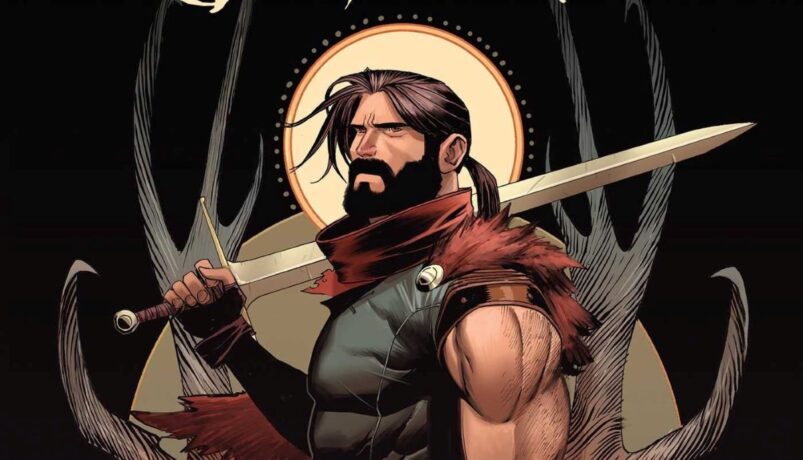Klaus: A Guide to The Cosmic Universe of The Siberian Shaman Santa
Alongside festivities like lighting a menorah, decorating a tree, or spending time with loved ones around a crackling fire, comic book readers used to celebrate the holidays with another annual tradition: reading the Nordic-Viking-infused Santa Claus epic fantasy comic series from writer Grant Morrison, artist Dan Mora, and letterer Ed Dukeshire.
BOOM! began publishing Klaus comic issues in 2015. Monthly comics. Fans didn’t care whether it was March or Jul: Morrison’s and Mora’s epic Santa Claus origin stories series were a huge success throughout the year. The seventh and final issue of the Yuletide series was completed. A single-volume collected them all in one compact book. Readers wished Santa would drop yet another Klaus comic in their stockings. This was the beginning of a new tradition.
From 2016 to 2019, every December, the creative team boosted holiday spirits with a sizeable comic issue. Unfortunately, due to the pandemic in the world, there was no annual issue on the shelves in 2020 and 2021. These issues were standalone and could contain anywhere between 25-50 pages. They also included familiar elements from the 7-issue original run. These one-shots slide through time as Klaus stops evil from spreading cheer throughout history’s different decades. Even the most miserable holiday-grinches will have a good time.
Comics have always loved to portray Santa. In Superman’s Christmas Adventure (a 1940 one-shot), Superman saves his beloved childhood hero. In the 1991 Marvel Holiday Special issue, Santa Claus appears one of Marvel Comics’ most powerful mutants. In comic books, Santa has been portrayed as a villain, a mutant, and, in Klaus’ case, a sexy, shamanic hero. Morrison and Mora’s 2015 comic depicts the folklore figure of a Nordic war hero who eventually defeats the Yule Lord Krampus. You don’t have to read Klaus, the visual and narrative masterpiece. If you feel down about the last two years of sadness, this is the perfect holiday gift.
In the comic series, Klaus is immortalized, a combination of myth, magic, and legend that brings joy and hope to the world. Morrison created this barbarian Santa Claus from Siberian shamanism, Nordic culture. The Klaus Santa Claus can be compared to Scandinavia’s mythical bringer. The Nordic Santa, the Julenisse, does not live at the North Pole. Klaus is closer to him. Julenisse is a Scandinavian country’s friend.
Morrison’s Klaus practices meditation and meets with the supernatural realm. He is a shamanistic Santa. The Tungusic people of Siberia, also known by the Evenki, were involved in shamanic cultures and herded reindeer. The Tungus word saman is the origin of Shaman. Saman means “one who knows the spirits,” and Klaus is a frequent comic visitor.
Siberian shamans used an altered consciousness to communicate with the spirit world. They did this by eating the mushroom Amanita Muscaria. Klaus doesn’t eat mushrooms, but Dan Mora, an artist, often uses psychotropic effects of shamanism to create his color palette in psychedelic colors. Siberian Shaman wore red and white during the winter solstice. They chose the colors of their clothing to imitate the Amanita Muscaria’s red-and-white appearance while giving the mushroom to others. Klaus’ behavior and the comic series visual themes resemble the Tungusic shamanic practices. Morrison conducted research
To explore every detail Morrison and Mora refer to in this series would require an entire essay. The rune Wojo is a reference to Nordic history. It denotes happiness and joy for those who strive to achieve euphoria. Klaus uses circular imagery to reference Norse mythology, where the circle symbolizes balance and the regenerative cycle of life. Klaus prefers to ride his cosmic sleigh pulled by wolves rather than reindeer. Wolves serve as companions to Odin in Norse mythology. They are just like Lili, who is loyal to Klaus.
The good news is that readers don’t need to know the history of Scandinavia. Understanding the research, time, and sensitivity that created the sexy, shamanic Santa story only adds to the awe Klaus inspires.







